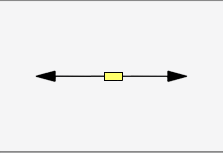What is Cold Forming?
Cold forming is a high speed forging process where coiled wire at room temperature is precisely sheared to length, and then moved through a succession of tool and die cavities to displace the working metal, either larger/smaller in diameter, longer/shorter in length, or to remove small amounts of material by trimming or piercing.
Metal is forced beyond its yield (elastic) limit and retains its altered shape upon removal from the die. The metal is not forced beyond its tensile strength, otherwise fracturing would occur (the exception is when trimming or piercing). Historically cold forming has been an experienced based technology, but this is changing as new computer based analytical tools are constantly being developed.
Basic Steps of Cold Forming
Cold forming the chosen material into a given part shape is governed by that material's structural properties. These properties help make up the "rules" of how to form parts, all based on the combination of 3 basic forming methods.
Benefits of Cold Forming
-
Speed
-
Net / Near net shape to eliminate or reduce secondary operations
-
Consistency / dimensional accuracy
-
Quality / surface finish
-
Material savings & elimination of scrap
-
Improvement in mechanical properties, greater strength-to-weight ratio, unbroken grain flow
Because of these benefits, Cold forming can be considered instead of Hot Forging, Casting, Powdered Metal, Machined Parts, Weldments and Stampings, or Reinforced Plastics / Composites.

Cold Forming Materials
Materials that can be cold formed include, but are not limited to:
-
Carbon steels
-
Brass
-
Lead
-
Stainless steel
-
Copper
-
Aerospace Alloys
-
Alloy steels
-
Bronze
-
Precious metals
-
Aluminum
-
Nickel Alloys

Cold Forming Machinery
Cold forming equipment is typically a horizontal press that feeds wire, cuts the wire to an appropriate length which is then transferred through a series of tools and dies to form the material into a desired shape.
Machines have many variations according to the type of parts that are to be produced including:
-
Cutoff diameter capability (ranges from 2mm to 48mm)
-
Feed length capability (ranges from 2mm to 300mm+)
-
Tonnage (ranges from 5 metric tons to 1600 metric tons)
-
Type of transfer
What is Warm Forming?
Warm Forming is the process of deforming metal heated to a temperature that maximizes the material’s malleability without allowing re-crystallization, grain growth, or metallurgical fracture. The process allows the part to be successfully formed with net shape features and to final tolerance that eliminate secondary machining operations. The temperatures are determined by part material, geometry and final specifications and tolerances.
Warm forming has been done on forming machines for decades, primarily in the aerospace industry because of materials such as titanium. Historically 3-blow 2-die or double stroke (1-die, 2-blow) machines had induction heaters added to them. Today, specialized machines like FORMAX are made with advanced technology designed exactly for warm-formed applications.
Process temperatures are determined by part material, geometry, and final specifications and tolerances. Temperatures can range from 200-850 degrees C. Coolants and tool clearances typically change at temperatures exceeding 600°C.
Possible material applications include:
-
Commercial Stainless Steels
-
FA 286 SS
-
High Carbon & Alloy Steels
-
Inconel
-
Waspalloy
-
Titanium (6-2, 6-4) Learn More





